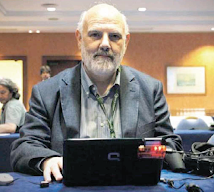a) changes in employment
b) changes in the economically active population.
b) is especially important in the Hungarian context, since population is declining, and the working age population is set to continually reduce as a proportion of the total population as Hungary inexorably ages. So this means that the unemployment level will have a structurally inbuilt tendency to decline, and a similar phenomenon is being observed in economies as far apart as Germany, Japan, Italy, and now most notoriously Latvia (and the Baltics generally).
If we look at this chart, which comes from this article in Portfolio Hungary, we can get a better picture of the whole recent trend in employment creation and unemployment evolution, and we will see that the picture since October-December 2006 has changed substantially.
(please click over image for better viewing)

Essentially the slowdown in the Hungarian economy is clear, and now unemployment is dropping at the same time as employment creation has turned negative (largely for cyclical reasons, but just because of this the structural transition is all the clearer, as again can be seen from this chart:
(please click over image for better viewing)

Again looking at the chart below the unemployment rate seems to have peaked in the last quarter of 2005, and (barring a major recession) this may now be a ling term peak, as the structural level drops due to population ageing (and, if you like, population exhaustion, in the technical numerical resource sense).
(please click over image for better viewing)

Clearly the picture is variable, as this quote suggests:
The jobless rate for the 15-24 year old, representing 17.2% of all unemployed, was 16.8%, down 0.8 percentage points from the reading in the same period last year. The KSH said 50.1% of all unemployed have been seeking jobs for a year or more (vs. 49.1% in the previous 3 months).
Again, could it be that there are a large number of rural over 50s in the over one year unemployed group?











No comments:
Post a Comment